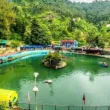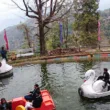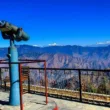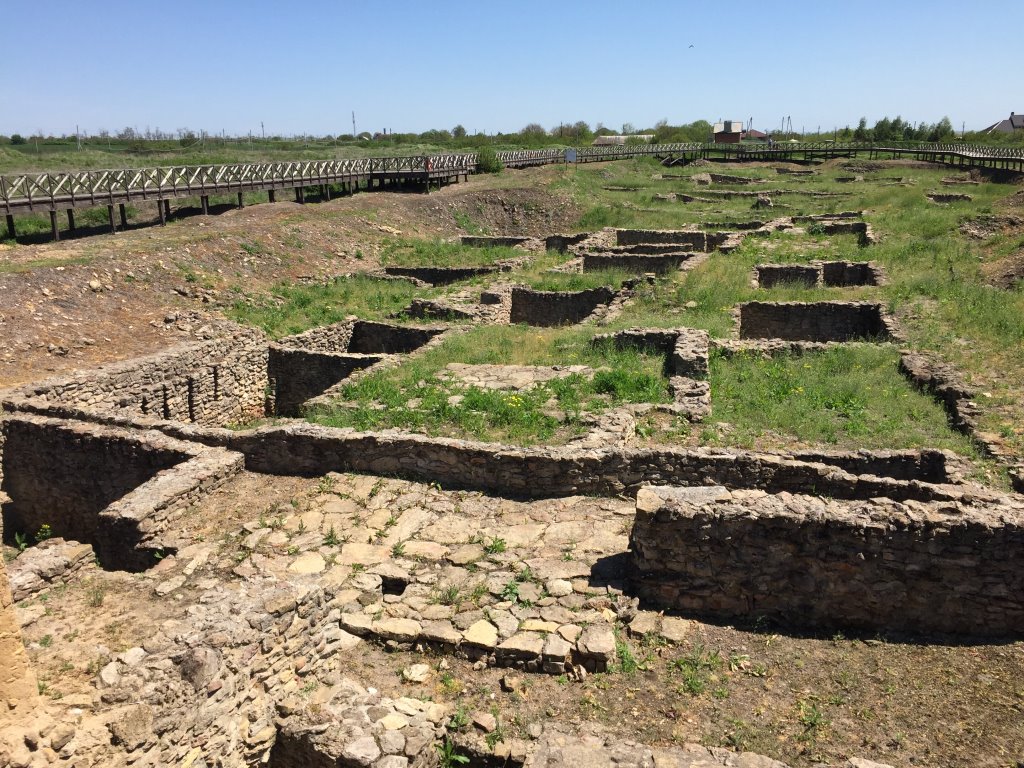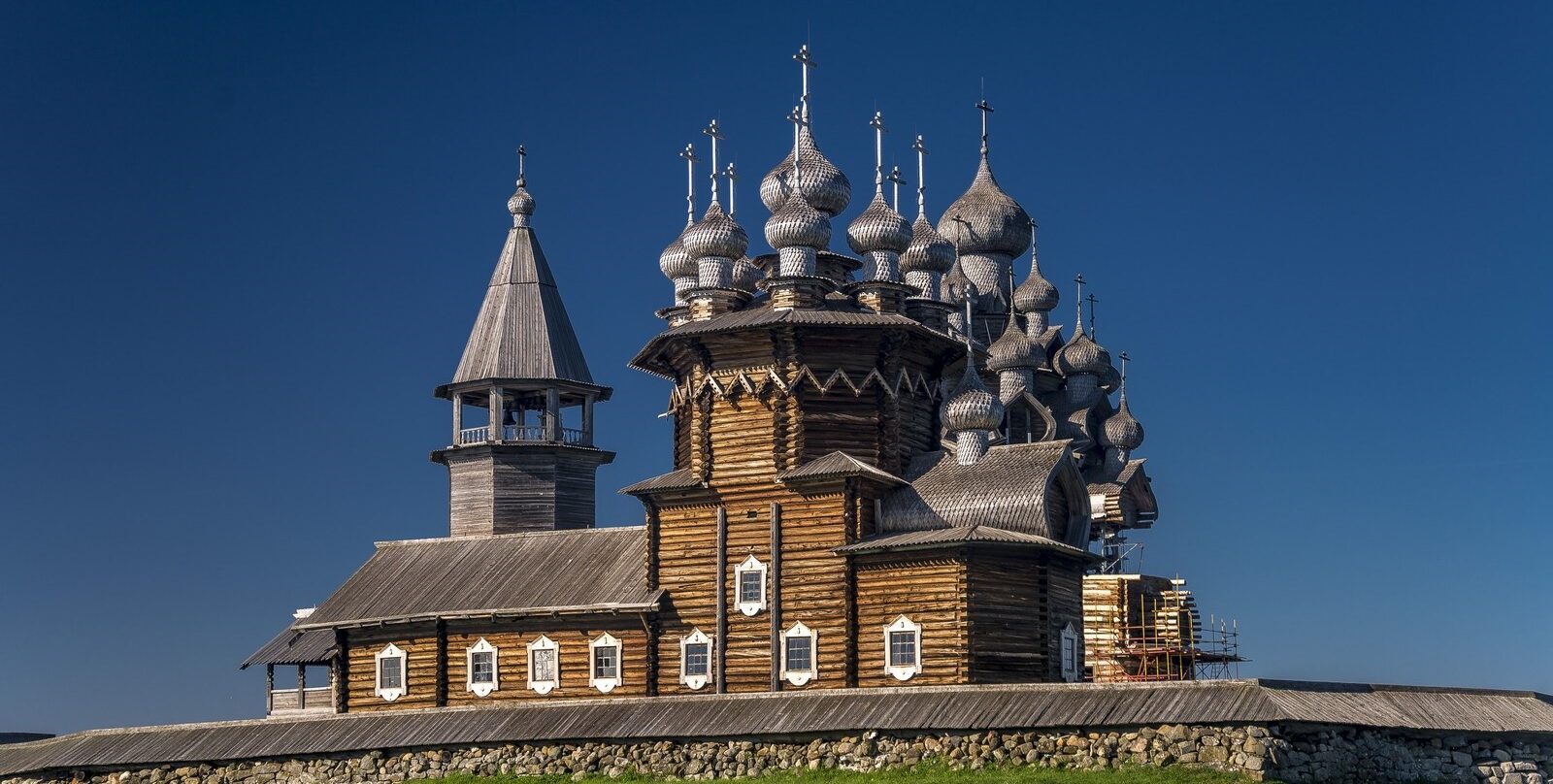Tanais Archaeological Museum-Reserve: The open-air museum-reserve is the largest historical and archaeological reserve in Russia. Tanais is located on the site of excavations of the ancient city of the same name in the Rostov region. On the territory of the Russian Federation, this museum became one of the first similar institutions. Today this place is very popular. Not only residents of the region come here, but also tourists from all over our country.
Tanais Archaeological Museum-Reserve
Museum structure
The reserve complex includes a whole ensemble of cultural and historical monuments. All of them belong to different time periods, from the Paleolithic era to the last century.
The main exposition of Tanais includes:
- History Museum opened in 2009.
- Museum of historical costume, which has been operating since 2007.
- Settlement.
On the territory of Tanais, you can get acquainted with various scientific reconstructions. All of them are built in the open air. Coming to this place, it is impossible not to admire the high sky, the free endless steppe, solitude, and the untouched beauty of nature. Immediately imbued with the realization that you are on the ancient Hellenic land, which was sung by Homer himself.
History of Tanais
The museum-reserve is located on the farmNedvigovka. In this place, the real life of the port city was once in full swing. According to scientists, it was a trade intermediary between two parts of the world – Europe and Asia. The ancient city was founded in the 3rd century BC. e. at the mouth of the river Don by the Bosporan Greeks. For a long time, it was the center of political, cultural, and economic life. In 237 Tanais was destroyed by the Goths, and 140 years later it was restored by the Sarmatians. In 1395, the city was again destroyed by the troops of Tamerlane to the very foundation.
The first archaeological excavations were carried out in 1823. The researchers began to study again in 1860. In 1955, a special archaeological commission was sent to investigate. Later, Tanais received the title of the protected area. The opening of the first museum reserve took place in 1961. Today, the museum looks like a large ancient city, which eventually turned into ruins.
There are many legends around this place. It still remains a mystery how Tanais was destroyed. Investigated, they say that the inhabitants left the city in a hurry, taking with them only everything they needed. The city itself was on fire. It is now reliably known that Tanais was a fortress surrounded by a wall and a deep moat. As part of archaeological expeditions, scientists and student volunteers from all over the world come to Tanais. To date, only a tenth of the settlement and a large area of the necropolis has been unearthed.
Attractions Tanais
The territory of Tanais occupies about 3 thousand hectares. Work has been going on here since the 19th century. On the territory of the museum reserve, visitors will see the ruins of the ancient buildings of the settlement, defensive structures, a bridge, bridge, and artifacts that were found during the exploration of the area. Here you can also participate in interactive programs on historical subjects. You can also clearly see that the tribes of militant women really existed. Burials were found in this place, in which women lay with a full set of weapons.
Museum of the History of Tanais
The first hall is dedicated to the history of the city and its commercial purpose. About 150 thousand exhibits are presented here. They reflect the various periods of development of this place. 3rd to 1st century BC. This exposition testifies to the initial period of the city’s development. The next is from the 1st to the 3rd centuries AD. She talks about the period the city was part ofBosporan kingdom. The next collection is dedicated to items that were found during excavations in the settlements of Kobyakovskoe andNizhne-Gnilovskoe .
It tells about the life and activities of the Tanaites. It is also devoted to the important role of settlements in the historical and economic development of the Lower Don at the beginning of our era. The next exhibition tells about the changes in the ethnic composition of the inhabitants of the city. It traces the features of the construction of houses, the structure of power, and the economy. On display, the necropolis reflects the chronology of Tanais, the burial and cult traditions of the Tanaites, as well as their neighbors. In this part of the museum, you can see weapons found by archaeologists, household items, dishes, jewelry, and other artifacts.
Museum of the history of the costume of Tanais
The collection is housed in two rooms. One is dedicated to ancient Greek, Roman, and Bosporan costumes. In another room, there is a collection of Sarmatian and Scythian costumes. There are also items that were used to make clothes and shoes.
Settlement
On the western, eastern, and northern sides of the settlement, there is a necropolis, in which the archaeologists of the Nizhne-Don expedition discovered more than a thousand ground burials and burial mounds. During its long history, the city has been inhabited by a rather diverse population, from an ethnic point of view. This is confirmed by various funeral rites.
Another museum complex is currently being created on the territory of the reserve. It will reconstruct structures and buildings of ancient times.
Holographic pyramid
Not so long ago, a unique design was installed on the territory of the reserve – a holographic pyramid. In the museum business, this is a completely new direction. Here you can see how the inhabitants of this place dressed, what hairstyles they had, and examine their jewelry in the smallest detail. You can see this holographic miracle in the building of the historical costume museum.
Antique playground
On the map of Tanais, the ancient children’s playground is marked with the number 9. Here you can see with your own eyes what our ancestors played in childhood.
Meot hut
There is a restored Meota hut in the museum reserve. This is the oldest inhabitant of the Sea of Azov. Meots lived in these parts for a thousand years before the beginning of a new era. Presumably by the 5th c. BC. part of the Scythians assimilated into the Meotian environment. And later, in the IV-III centuries. BC. the Meotian tribes became part of the Bosporus state. The meot hut recreates the atmosphere of that time.
Polovtsian sculptures and Polovtsian sanctuary
If you go from the Meot hut to the settlement, then along the way you can see the stone statues of the Polovtsians. Stone statues at that time were installed facing the sunrise and surrounded by a moat or stone fence. Just such a Polovtsian sanctuary has been recreated next to the northern ticket office.
Programs for guests
Arriving at the museum, you can not only visit the museum and excavations. Various interactive programs are often held here. Costumed performances by members of the Odeon Theater and the collective of Ella’s association are offered to the attention of guests. They are dedicated to Ancient Rome, Ancient Greece, and the Don peoples. All activities are focused on additional education, physical, moral, and patriotic education for schoolchildren of different ages. All participants are introduced to the culture and way of life of their ancestors. In addition, “Initiation into the Tanahites” is held here.
The event is a theatrical performance in three parts. It includes a tour of the settlement and the initiation ceremony itself with dressing in themed costumes. Everyone is offered the opportunity to marry in ancient Greek traditions. So everyone can choose an event to their liking and depending on the circumstances.
Schedule
The Tanais Museum-Reserve is open daily from 9.00 to 17.00. Ticket offices close at 16:30. At 17:00, all objects and entrance gates are closed for visiting.
The museum’s collection consists of more than 100,000 items. Today, a tenth of the city and almost the entire territory of the necropolis have been excavated. All of them were found here by archaeologists. Tourists are invited to visit the open-air exposition and several indoor halls. According to reviews, each part of the reserve is interesting and unique in its own way. You can spend more than one hour here studying a huge collection of artifacts and the vast territory of the settlement. Here you can not only relax but also get acquainted with the history of this place.
The Tanais Museum-Reserve is a great place for photo shoots, weekend tours, and educational recreation. Attraction is widely known not only among the inhabitants of the Rostov region. Tourists from all over Russia come here every year.
Similar Articles

